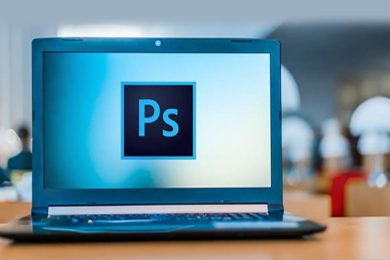



 Tech & IT
Tech & IT
 Business
Business
 Coding & Developer
Coding & Developer
 Finance & Accounting
Finance & Accounting
 Academics
Academics
 Office Applications
Office Applications
 Art & Design
Art & Design
 Marketing
Marketing
 Health & Wellness
Health & Wellness
 Sounds & Music
Sounds & Music
 Lifestyle
Lifestyle
 Photography
Photography
More Learnfly
Business Solution Become an Instructor"Image editing is the meticulous process of refining and enhancing visual content. Through software tools and creative techniques, editors perfect color balance, clarity, and composition. This skillful craft transforms raw images into polished works of art, ensuring that every detail contributes to a visually compelling and aesthetically pleasing result."
.jpg)
By : HARSH VARDHAN Arts
A step-by-step Guide to Creating Amazing Concept Art Photo Composites in Adobe Photos...
4.7 62856
36 lectures All Level

By : Igor Risteski
The most important Photoshop techniques and tools, for Profitable Freelancing as a Ph...
4.6 84509
5:3:1 hrs 26 lectures Beginner Level












Learn more topics in various categories at one place. Explore unlimited courses in other categories and up-skill yourself today.

 Jazeb Akram
Jazeb Akram 4.2 771159 Beginner Level

 John Hedengren
John Hedengren 4.1 569062 All Level

 Ranjan Pandey
Ranjan Pandey 4.1 346728 All Level

 Muhammad Ahsan Pervaiz
Muhammad Ahsan Pervaiz 4.2 101337 All Level

 Pieter Vliegenthart
Pieter Vliegenthart 4.6 100916 All Level

 Jerome P.
Jerome P. 4.8 100881 All Level

 Senol Atac
Senol Atac 4.9 100091 All Level

 Vikas Munjal
Vikas Munjal 4.8 100064 Beginner Level

 Avinash A
Avinash A 4.8 100013 All Level
Image editing refers to the process of manipulating or enhancing digital images to achieve a desired visual outcome. It involves adjusting various elements such as color, contrast, brightness, and sharpness, as well as more advanced techniques like retouching, compositing, and applying creative effects.
Image editing is important for improving the visual quality of photos, correcting imperfections, and expressing creativity. It is widely used in photography, graphic design, and digital art to enhance and refine images for various purposes, including personal enjoyment, professional projects, and marketing materials.
Common components include color correction, exposure adjustments, cropping, and resizing. Advanced techniques may involve retouching to remove blemishes or unwanted elements, compositing multiple images, applying filters or artistic effects, and working with layers for more complex edits.
Learning image editing involves understanding the tools and functions of image editing software, such as Adobe Photoshop, GIMP, or Affinity Photo. Online tutorials, courses, and practice with real images contribute to skill development. Experimenting with different tools and exploring the possibilities of image editing software helps individuals gain confidence and proficiency in the process.
While specialized software like Adobe Photoshop is commonly used for professional-level image editing, there are also user-friendly and free alternatives like GIMP or online editors. Beginners can start with simpler tools and gradually move to more advanced software as their skills grow. Understanding the fundamentals of image editing, regardless of the software used, is essential for achieving desired results.





